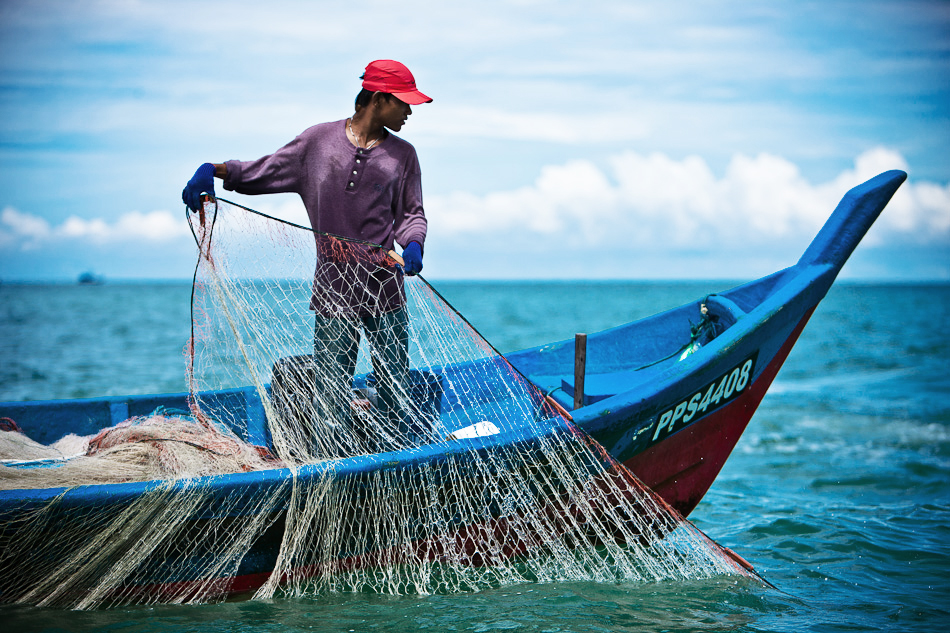For the perfect catch, you need the best fishing nets. Purse seine, trawl nets, or even a basic fish net, benefit from regular care. A few smart hacks increase net performance and durability.
Here are the hacks.
The First Step, Gentle Handling
Fishing nets are tough, but improper or rough handling can quickly wear them down. Avoid dragging them across rough surfaces to keep damage away. Also, try to refrain from applying too much force on the net when hauling in catches. After a day by the water, keep the fishing purse seine nets in a cool and dry place so that they aren’t exposed to direct sunlight. The harmful UV rays of the sun can weaken the synthetic materials and lead to early deterioration.
Cleaning Routine for Fishing Nets
Regular cleaning protects your purse seine and basic fish net from damage, both visible and hidden. Rinse the nets with plenty of fresh water to wash away the salt, dirt, and organic matter that can get stuck on the net fibres. Use a biodegradable soap every few weeks to keep the net functional, and don’t use bleach or strong chemicals. These can weaken the mesh and can result in long-term harm to the nets.
For grime, use a gentle brush. Soaking nets in mild vinegar helps get rid of the odors and organic build-up.
Inspection and Quick Repair for Trawl Net
For a large trawl net, you need routine inspection. Lay your fishing net flat and stretch the mesh after each use to look for holes and/or weakened knots.
Always keep a repair kit close in case of urgent fixes while fishing. For purse seine nets, check the rings, floats, and attachments for rust and other kinds of damage. If unattended, they can subtly damage the surrounding mesh, which can escape the naked eye
Proper Drying and Storage
Refrain from storing your fishing nets when they’re still wet; otherwise, it will result in mold, rot, and mildew on them. After you’ve rinsed the net, hang the net in a ventilated and shaded area so that air flows freely. If you’re storing the net indoors, use fans to dry the netting fast.
Once the nets are dry, loosely fold or roll the net. This prevents compression of the mesh. Breathable covers and UV-resistant bags provide an extra protective layer.
Equipment and Hardware Update
Using corrosion-resistant rings, floats, and anchors is also a good idea to keep the fishing nets safe against corrosion, abrasion, and other similar types of damage. Digital tracking and monitoring systems, like acoustic trawl tracking and digital twins, can track the net’s performance and receive real-time information, making scheduling preventative maintenance easy and swift.
Avoiding Strong Chemicals
Use gentle and non-invasive cleaning agents to keep the net’s strength intact. Bleach may seem effective, but it jeopardizes the mesh, making it more likely to break and become brittle. Use mild soap and vinegar to remove odors and dirt.
Reducing Exposure
Keep damage at by using and retrieving them away from bumpy or jagged terrain. If you won’t use the nets for extended periods, cover them with tarps or keep them under shelter to block both water and sunlight. These speed up the wear and tear. The key is to be mindful while using these nets.
Trawl Net Design Upgrades
Consider adding extra floats to your trawl nets so that you can easily lift them from the seabed and not damage (or cause little damage) the nets. Lightweight rigging reduces the towing strain and further protects the mesh. These tweaks can improve the life of the nets, and the investment is also minimal.
Taking Professional Help
If your nets have difficult tears that need complex repairs, contact experts who can also carry out annual servicing to keep the nets in their best form, especially for commercial fishing vessels.
Tracking Net Condition
Maintain a record of repairs, servicing, and usage so that it is easier to plan maintenance and prevent minor issues from escalating into major problems.
Conclusion
To conclude, getting the best out of your fishing nets is about regular maintenance, which includes timely repairs, periodic servicing, cleaning, and upgrades. Here’s to keeping your fishing nets strong and your catch plentiful!







